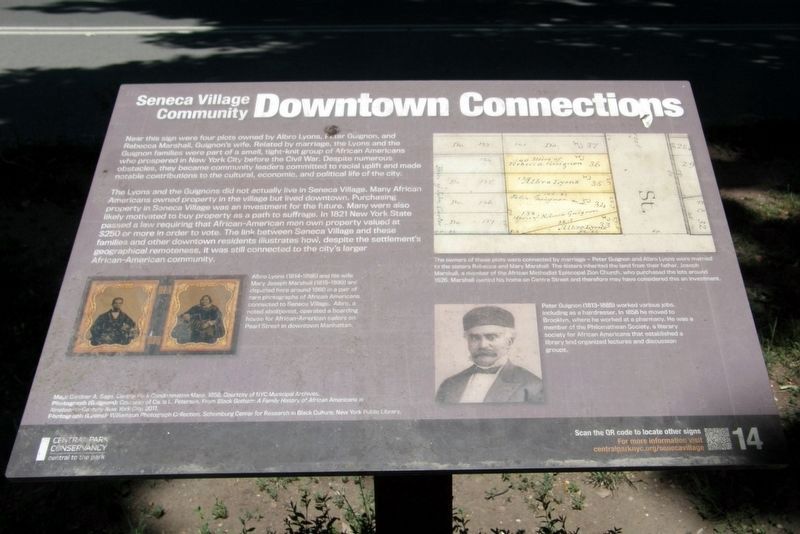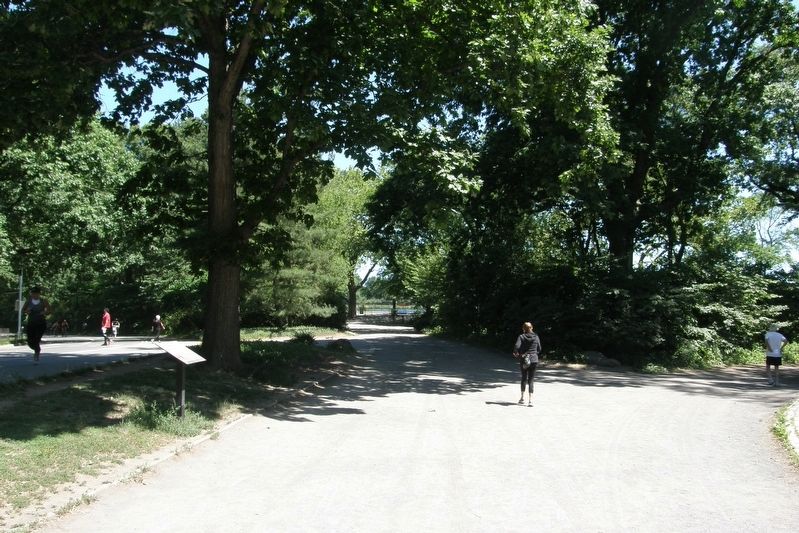Central Park West Historic District in Manhattan in New York County, New York — The American Northeast (Mid-Atlantic)
Downtown Connections
Seneca Village Community
Near this sign were four plots owned by Albro Lyons, Peter Guignon, and Rebecca Marshall, Guignon’s wife. Related by marriage, the Lyons and the Guignon families were part of a small, tight-knit group of African Americans who prospered in New York City before the Civil War. Despite numerous obstacles, they became community leaders committed to racial uplift and made notable contributions to the cultural, economic, and political life of the city.
The Lyons and the Guignons did not actually live in Seneca Village. Many African Americans owned property in the village but lived downtown. Purchasing property in Seneca Village was an investment for the future. Many were also likely motivated to but property as a path to suffrage. In 1821 New York State passed a law requiring that African-American men own property valued at $250 or more in order to vote. The link between Seneca Village and these families and other downtown residents illustrates how, despite the settlement’s geographical remoteness, it was still connected to the city’s larger African-American community.
Erected 2020 by Central Park Conservancy.
Topics. This historical marker is listed in these topic lists: African Americans • Parks & Recreational Areas • Settlements & Settlers. A significant historical year for this entry is 1821.
Location. 40° 47.081′ N, 73° 58.034′ W. Marker is in Manhattan, New York, in New York County. It is in the Central Park West Historic District. Marker can be reached from West 86th Street east of Central Park West. Touch for map. Marker is at or near this postal address: Central Park, New York NY 10024, United States of America. Touch for directions.
Other nearby markers. At least 8 other markers are within walking distance of this marker. Andrew Williams (within shouting distance of this marker); Reservoir Keepers (about 300 feet away, measured in a direct line); Gardens (about 300 feet away); Seneca Village (about 300 feet away); AME Zion Church (about 400 feet away); African Union Church (about 400 feet away); Seneca Village Landscape (about 400 feet away); Seneca Village Community (about 400 feet away). Touch for a list and map of all markers in Manhattan.
Regarding Downtown Connections. Like most Seneca Village sites, there are no physical remains or representations to be had.
Also see . . .
1. Seneca Village. Wikipedia entry (Submitted on May 31, 2021, by Larry Gertner of New York, New York.)
2. Seneca Village Site. Central Park Conservancy website entry:
Links to several related sub-topics (Submitted on May 31, 2021, by Larry Gertner of New York, New York.)
3. Seneca Village, New York City. National Park Service entry (Submitted on May 31, 2021, by Larry Gertner of New York, New York.)
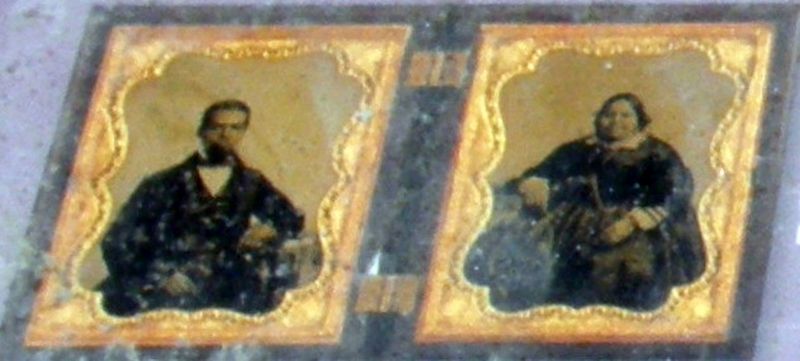
Photographed By Larry Gertner, June 17, 2020
3. Inset
Albro Lyons (1814-1896) and his wife Mary Joseph Marshall (1815-1899) are depicted here in a pair of rare photography of African Americans connected to Seneca Village. Albro, a noted abolitionist. operated a boarding house for African-American sailors on Pearl Street in downtown Manhattan.
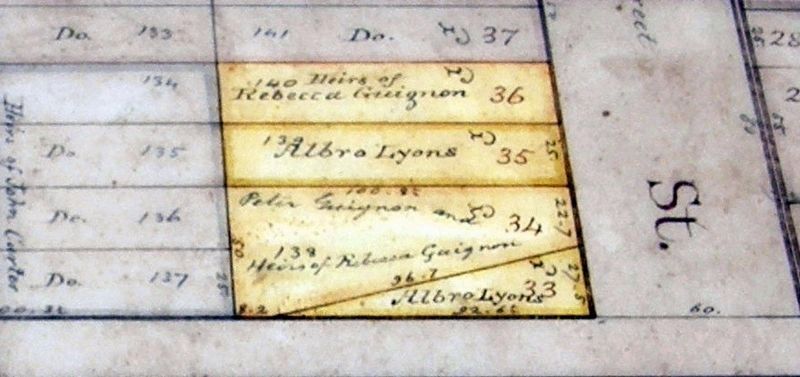
Photographed By Larry Gertner, June 17, 2020
4. Inset
The owners of these plots were connected by marriage – Peter Guignon and Albro Lyons were married to the sisters Rebecca and Mary Marshall. The sisters inherited the land from their father, Joseph Marshall, a member of the African Methodist Episcopal Zion Church, who purchased the lots around 1826. Marshall owned his home on Centre Street and therefore may have considered this an investment.
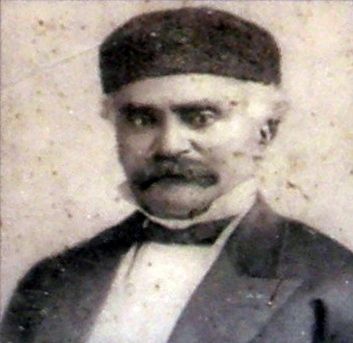
Photographed By Larry Gertner, June 17, 2020
5. Inset
Peter Guignon (1813-1885) worked various jobs, including as a hairdresser. In 1858 he moved to Brooklyn, where he worked at a pharmacy. He was a member of the Philomathean Society, a literary society for African Americans that established a library and organized lectures and discussion groups.
Credits. This page was last revised on January 31, 2023. It was originally submitted on May 31, 2021, by Larry Gertner of New York, New York. This page has been viewed 177 times since then and 8 times this year. Photos: 1, 2, 3, 4, 5. submitted on May 31, 2021, by Larry Gertner of New York, New York.
